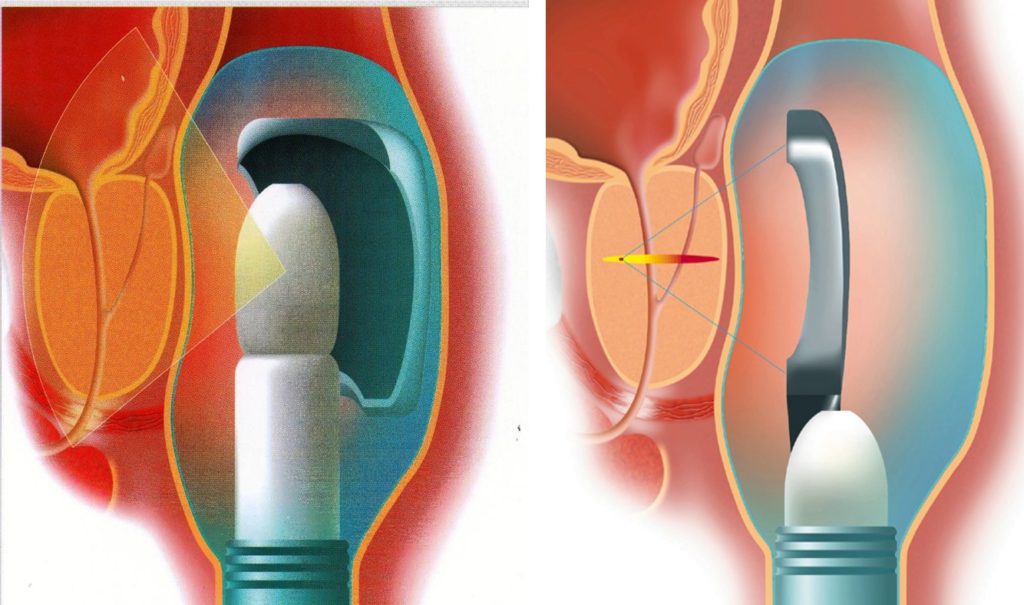Optional Treatments
Treatments > Optional Treatments > The other energies > HIFU
HIFU
HIFU stands for High Intensity Focalized Ultrasound. It has been used the first time in 1942, experimentally to destroy cerebral tissue on animals. In the prostate field, HIFU has been around since the nineties. This ancient technique has been recently customized through the Focal One®.
Technique
HIFU is an acoustic wave technique in which pressure waves at ultrasound frequency are used for different kind of disease. Unlike in the use of US in imaging, HIFU differs by higher intensity and focused at a single point waves. This use has 2 consequences. First, the mechanical energy of the US is turned into heat up to 80-100°C. Secondly, it produces a cavitation effect with a tissue vibration stressing the cells to death. The HIFU are produced by a transducer integrated to the US imaging probe introduced intrarectally (picture 64). The focal point of destruction is located at 3 to 4 cm distance into the prostate resulting in a coagulative necrosis of the targeted tissue. It is a minimally-invasive technique and the sole prostate focal therapy without a transperineal approach. Depending on the targeted volume the procedure can last 1 to 2 hours under general or regional anesthesia. For patients with obstructive urinary symptoms a prostate resection is needed before an HIFU procedure to avoid acute urinary retention.

Picture 64 : The HIFU device contains 2 transducers : low-intensity for the imaging and high-energy for the treatment
Indications/Guidelines
HIFU is mostly indicated for patient below 70 years with a life expectancy above 5 years. Most of the patients treated by HIFU have an ISUP 1 or 2 prostate cancer with a PSA below 15 ng/ml. HIFU is also used as salvage therapy after a radiation therapy failure even in more advanced stages.
Results
In 2018, one of the most accomplished multicenter study with 5 years follow-up has been published. The population of 599 men was 13% low-risk (LR), 53% intermediate-risk (IR) and 32% high-risk [HR] (see “Clinical Scenarii”). The procedure was successful for 96% of LR patients, 88% of IR and 84% of HR with the necessity of a retreatment in 20-30% of the total cases. In this particular study, there was no erectile function impact results and at 3 years, 80% of the patients treated had no leakage at all [32].


